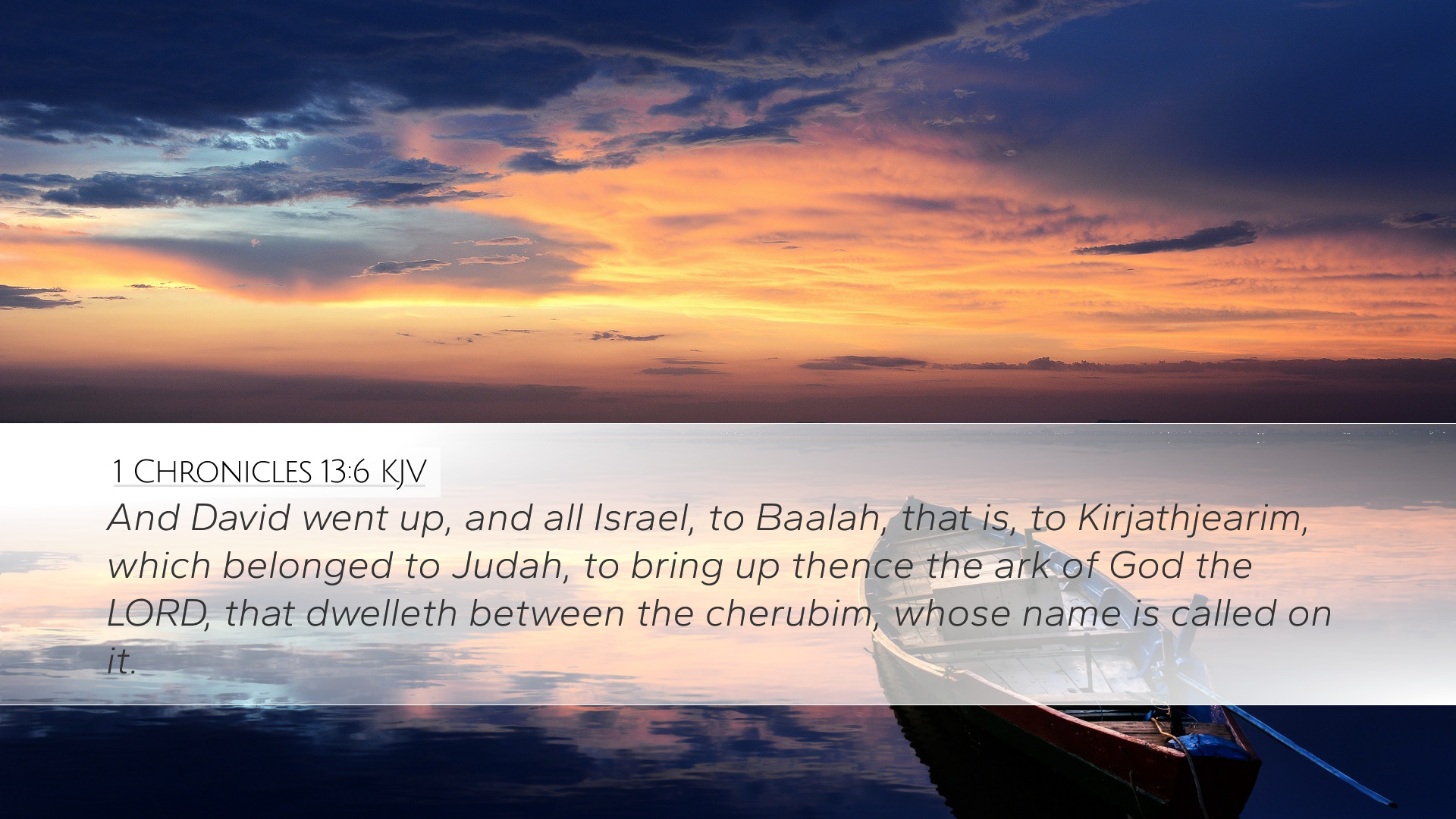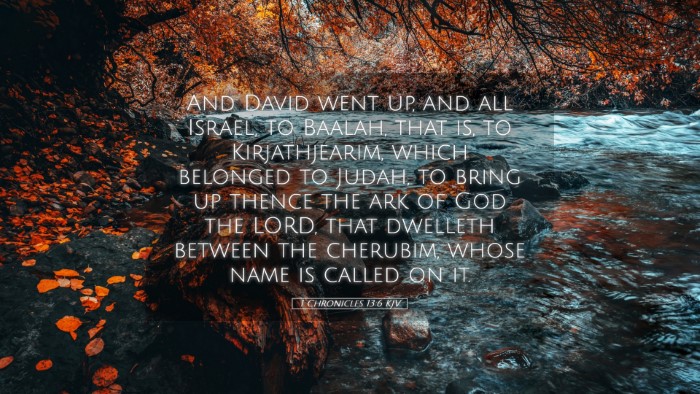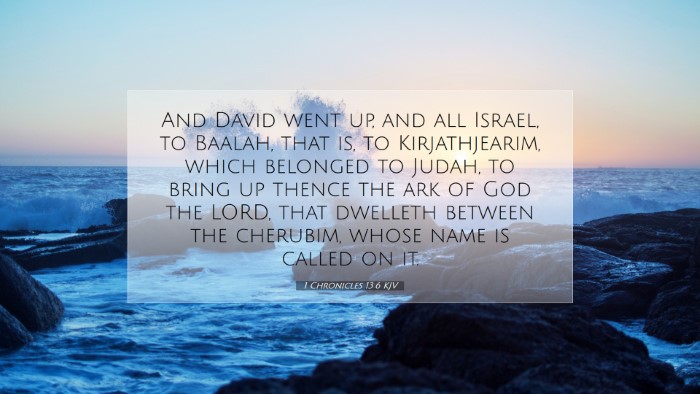Commentary on 1 Chronicles 13:6
Verse Under Consideration: "And David went up, and all Israel, to Baalah, that is, to Kirjath-jearim, which belonged to Judah, to bring up thence the ark of God, the Lord that dwelleth between the cherubims, whose name is called on it."
Context and Background
In the context of 1 Chronicles, we observe a pivotal moment in Israel’s history where King David seeks to restore the worship practices associated with the Ark of the Covenant. After taking the throne, David's first significant political and religious move is to retrieve the Ark to Jerusalem, symbolizing the unification of Israel under God and David's rightful reign.
The Significance of David's Actions
David's journey to Baalah (Kirjath-jearim) reflects his deep desire to honor God and fulfill his spiritual responsibilities as king. This initiative shows that David not only prioritizes military and political stability but also acknowledges the importance of divine presence among the people.
Insights from Matthew Henry
Matthew Henry emphasizes the spiritual zeal exhibited by David in this endeavor. He notes that:
- David's genuine intention to bring the Ark back demonstrates a devotion to God and a desire for His manifest presence in the land.
- Henry remarks on the notion that the Ark represented the throne of God and the place where God would meet His people, thus its retrieval was crucial for national revival.
- He also highlights that David leads all Israel, indicating unity in worship and governance, setting a precedent for future leaders.
Insights from Albert Barnes
Albert Barnes provides insight into the geographical and theological implications of choosing Baalah as the place of retrieval. He discusses:
- Baalah, located in Judah, symbolizes a return to the tribal identity of Israel and God’s covenant promises to the patriarchs.
- The mention of the Ark’s connection to the cherubim encapsulates the idea of God’s dwelling among His people and serves as a reminder of His holiness.
- Barnes asserts that the Ark being transported echoes the larger narrative of God’s presence, protection, and guidance in the journey of the Israelites, both historically and contemporaneously.
Insights from Adam Clarke
Adam Clarke offers a detailed examination of the name "Kirjath-jearim," interpreting it as "the city of woods," potentially linking it with the natural order. Clarke elaborates that:
- This journey signifies returning to roots and reconnecting with God’s promises, which were often associated with the land of Judah.
- He discusses the ark's significance as encapsulating God’s presence, which John Calvin notes was vital for spiritual life, paralleling the need for every believer’s life today.
- Clarke further emphasizes the importance of leading the community with a heart aligned with God's—and links this to contemporary worship practices in the church today.
Theological Implications
The retrieval of the Ark has far-reaching implications for understanding God's relationship with Israel. The act signifies:
- Covenantal Faithfulness: God’s unchanging fidelity to His promises and the importance of His presence in the lives of His people.
- Leadership Responsibility: The duties of those in authority not just to govern but to foster an environment where divine worship is central.
- Collective Worship: The involvement of all Israel indicates that worship is communal, calling on all believers to honor God collectively.
Practical Applications for Today
Drawing from the insights of these commentaries, we can derive practical lessons applicable to today's pastors, theologians, and scholars:
- Revitalizing Worship: Can our churches reflect David's zeal in our approach to worship? Are we prioritizing God’s presence in our services?
- Witnessing Unity: In a fragmented society, how can we embody the unity David exemplified in leading the people towards God?
- Assessing Leadership Roles: Are our leaders genuinely guiding congregations back to the core of God’s purpose and mission in a cultural context?
Conclusion
1 Chronicles 13:6 encapsulates a significant moment of faith and community that goes beyond historical narrative. It invites leaders and congregants alike to reflect on their identity and responsibility as God's people. The combined insights from Matthew Henry, Albert Barnes, and Adam Clarke challenge us to foster a deeper understanding of God’s presence and how it should permeate every action of worship moving forward.


